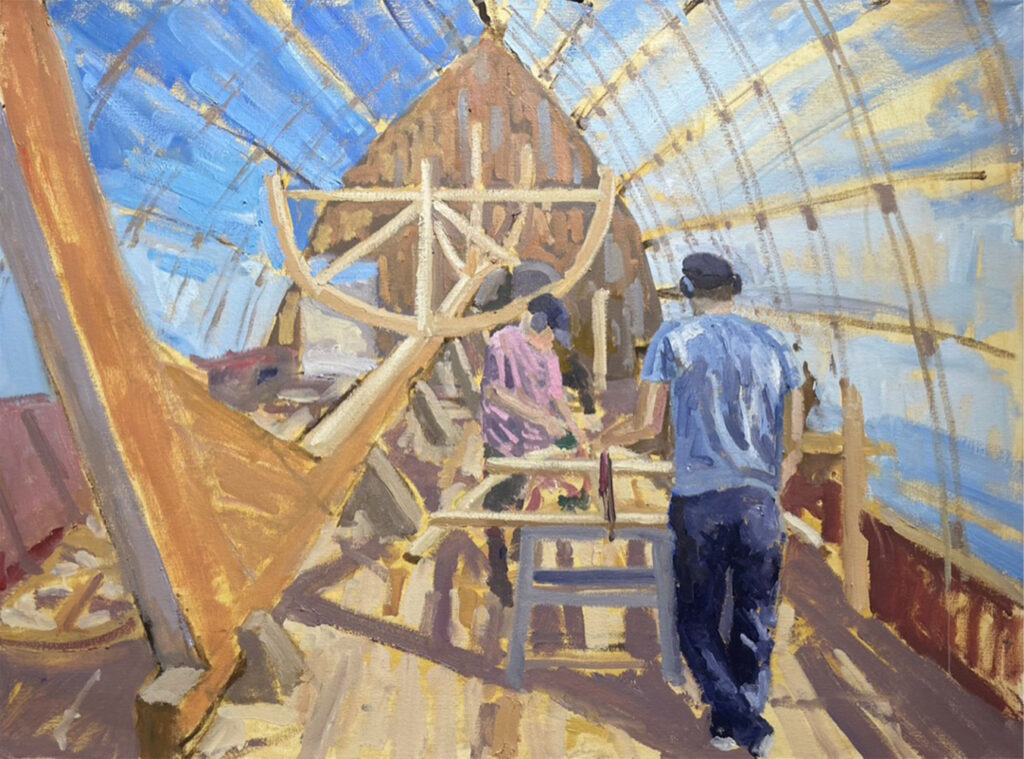Stephen Florimbi is a consummate and persistent student of painting. He was trained in traditional methods of oil painting and drawing at the University of New Hampshire by professors, Craig Hood and Grant Drumheller. Their encouragement supported the development of his own expressive style and initiated his enduring exploration—a practice which has evolved from narrative work using oil pastels and glazes, to exploring formal design in abstraction using acrylics, spray paint, and Flashe, to his current focus—expressing his distinct vision directly from observation using traditional oil techniques.
Born in Philadelphia, he moved to Madrid Spain at the age of six where he was introduced to the works of masters like Goya in the Prado Museum. “I had a visceral reaction to seeing Goya’s, The Third of May in Madrid. I remember being deeply moved by the painting and becoming keenly aware of the power of the artist. From then on, I was hooked on art.”
In college, Stephen explored drawing, painting, sculpture and woodworking. In the summers he worked as a carpenter building timber-frame houses as well as doing field and lab work for the university forestry department. After graduating with a degree in resource economics he designed and built a small wooden boat in his back yard as a “sculptural challenge”. This lead him to pursue a two year wooden boatbuilding apprenticeship program in Rockport, Maine and launched his career as a carpenter/wooden boatbuilder. He ultimately became the general manager of Rockport Marine (rockportmarine.com) in Maine before leaving the industry to focus full time on his painting career.
Stephen’s growth as a painter paralleled his work as a builder. His paintings have been exhibited in Midcoast Maine, Connecticut and New York City, graced an album cover of a local band and the back cover of Wilton Magazine. He has also been featured in Yankee Magazine for the renovation of his 1840s home where his paintings feature prominently. The boats he has built and restored, sail the globe.
Stephen finds further mind, body and spiritual connection through athletic endeavors such as jumping rope, trail running, and hiking with his wife and dog. He recently picked up rock’n roll drumming.
Statement
I like to explore patterns I see in nature, patterns of harmony and discord both anatomical and behavioral. I notice the layers, the hierarchies, the paradoxes that coexist. These inform my relationship to my own species and to my natural and cultural environments. I see life as a landscape, however abstract, peopled or not, reflecting the dynamics of those relationships. I strive to make my paintings an almost animate reflection of our ecology, and to encourage the same illuminating examination.
I am fascinated by what scientists call “crypsis”—the ability of an organism to avoid observation or detection by other organisms—and how it is used by prey and predator alike. Camouflage is one example with its own cultural connotations. Such hidden objects, intentions and agendas for individual and/or collective survival intrigue me.
As an artist I contend with visibility and invisibility, with being or not being seen, and the concept of longevity, this landscape, this life.
Stephen Florimbi

